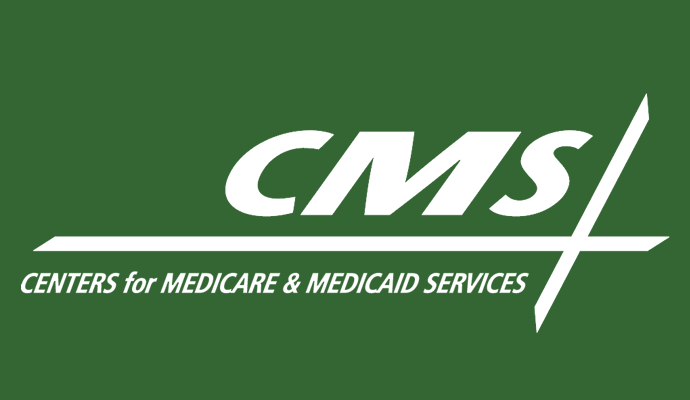CMS Releases Skilled Nursing Facility PPS Proposed Rule for FY23
CMS proposed adding new quality measures to the Skilled Nursing Facility Quality Reporting Program and the Value-Based Purchasing program in the SNF PPS proposed rule for FY 2023.

Source: CMS Logo
- CMS has released its proposed Skilled Nursing Facility (SNF) Prospective Payment System (PPS) rule for fiscal year 2023, which includes a reduction in Medicare payments for SNFs.
The proposed payment policies decrease Medicare Part A payments to SNFs by around $320 million in FY 2023, CMS estimated.
Last year, the agency proposed a $444 million increase in SNF Medicare payments.
CMS reached the $320 million decrease based on several factors. First, it reflects a $1.4 billion increase due to the 3.9 percent payment rate update, based on the SNF market basket update of 2.8 percent. The payment rate update reflects a 1.5 percentage point increase for market basket forecast error adjustment and a 0.4 percentage decrease for productivity adjustment.
Finally, the $320 million reduction reflects a $1.7 billion, or 4.6 percent, decrease in the SNF PPS rates due to the proposed recalibrated parity adjustment.
CMS implemented the Patient-Driven Payment Model (PDPM) in 2019. The agency intended to transition to this case-mix classification model without seeing a change in aggregate SNF spending. However, payments increased by around 5 percent in FY 2020 following PDPM implementation. Therefore, CMS has proposed a recalibration of the PDPM parity adjustment to reduce SNF payments by $1.7 billion in FY 2023.
Similar to the recently proposed rules for inpatient rehabilitation facilities and inpatient psychiatric facilities, CMS has proposed a permanent 5 percent cap on annual wage index decreases to limit year-to-year changes in SNF payments associated with wage index changes
The agency proposed several changes to ICD-10 code mappings and coding guidelines and has requested stakeholder feedback on the criteria for coding infection isolation. The rule also asked for input on the impact of direct care staffing requirements and feedback on establishing minimum staffing requirements for long-term care facilities.
CMS has proposed to adopt a new quality measure for the SNF Quality Reporting Program (QRP). The measure would assess the rate of influenza vaccination coverage among healthcare personnel (HCP).
“Residents of long-term care facilities, who are often of older age, have greater susceptibility for acquiring influenza due to general frailty and comorbidities, close contact with other residents, interactions with visitors, and exposure to staff who rotate between multiple facilities,” the press release stated.
“Therefore, monitoring and reporting influenza vaccination rates among HCP is important as HCP are at risk for acquiring influenza from residents and exposing influenza to residents.”
CMS also moved the compliance date for certain SNF QRP reporting requirements to October 1, 2023. These measures include Transfer of Health Information measures and standardized patient assessment data, including race, ethnicity, preferred language, health literacy, and social isolation.
The agency is seeking input from stakeholders on ways to include health equity quality measures in the SNF QRP and comments on including the CoreQ: Short Stay Discharge measure in the QRP, which assesses patient satisfaction levels.
The proposed rule introduced potential changes to the SNF Value-Based Purchasing (VBP) program. CMS proposed assigning all participating SNFs a performance score of zero to mitigate the effect of public health emergency-related measures on final scores. In addition, CMS will reduce the federal per diem rate for each SNF by 2 percent and award SNFs 60 percent of that withhold, resulting in a 1.2 percent payback to SNFs.
CMS is also proposing adding three new quality measures to the QRP. Beginning in FY 2026, the program would adopt the Skilled Nursing Facility Healthcare Associated Infections Requiring Hospitalization (SNF HAI) measure. This measure assesses SNF performance in infection prevention and management.
The Total Nursing Hours per Resident Day measure would also take effect in FY 2026, which uses auditable electronic data to calculate total nursing hours per resident day.
In FY 2027, the program would adopt the Discharge to Community – Post-Acute Care Measure for SNFs, which assesses the rate of successful discharges to the community from an SNF setting.
CMS is also seeking feedback on including a Nursing Home Staff Turnover measure in the VBP program. The measure uses data from the CMS payroll-based journal system and reports annual turnover for nurses.
